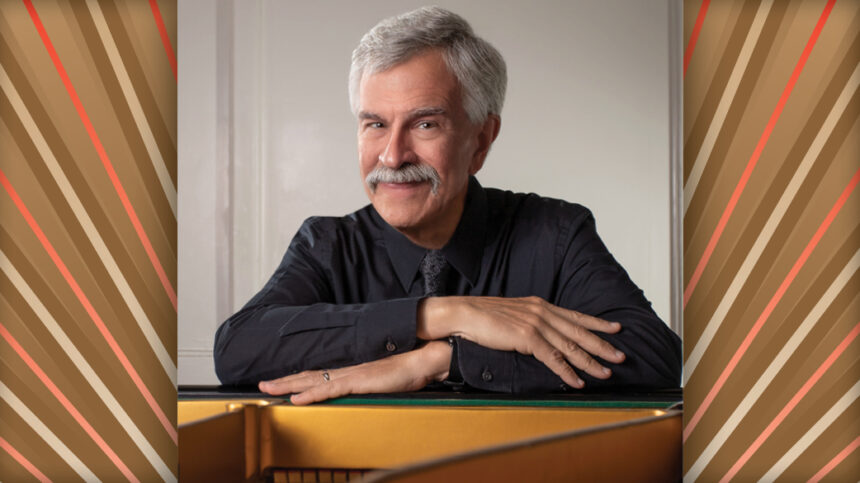“Vibrant Echoes,” Mississippi Symphony Orchestra’s final chamber concert of the season, April 27 at Tougaloo College’s Woodworth Chapel, celebrates the rhythmic thread of Black musical traditions and influences in America, from the late 19th century clear through to contemporary times. Its relevant setting, at the historically Black college that played a key role in America’s civil rights struggle, enhances the resonance.
Among its many highlights is James P. Johnson’s Yamekraw, A Negro Rhapsody, with Stephen Sachs as the piano soloist, reveling in the rhythms and jazzy exuberance of the work. The Mississippi Symphony Woodwind Quintet dives into Valerie Coleman’s signature Umoja and playful Red Clay and Mississippi Delta, while the Mississippi Symphony String Quartet captures the spirit, and echoes of folk songs and spirituals in Dvořák’s American Quartet. Two works by Mississippi-born composer William Grant Still complete the concert program.
Sachs has spent practically a lifetime on the bench – the piano bench – soaking up the sounds since the tender age of 2. The Belhaven University professor emeritus and Director of Music Ministries at Covenant Presbyterian Church in Jackson grew up in Chambersburg, Pennsylvania, where an early bout of rheumatic fever took the usual outlets of childhood play off the table.
“I survived and the doctor told my mother that she had to keep me from running for six months,” Sachs said, to keep pressure off his heart as he recuperated. Circumscribed living spaces became his parents’ arms, crib, play pen or his mom’s lap as she taught piano lessons.
“So, I’m told, one day, after one of her students had played, I wanted to go play on the piano, too,” he said. The notes he played were strikingly similar to what he’d just heard, and his excited mom got the doctor’s OK to start lessons. He was 2 1/2. Soon, he had another teacher who enjoyed working with the younger set, and by 5 he was reading music. Sachs’ first “recital,” as the “very, very short entertainment” for his mom’s women’s club meeting, featured The Spinning Song.
“I’m 5 years old, I’m having a blast.” All was going great, until somewhere along the way, he derailed and couldn’t restart. Young Sachs stood up, looked at his audience and said, “That’s all I remember. I’ll come back and play the rest for you another time.” They loved it, Sachs chuckled. “My mother was horrified.”
High school included a great sophomore year in Arizona, where he got to study with the piano chair at Arizona State, and a challenging one back in Pennsylvania. A particularly tough advanced math class pushed him toward the music path. When a visit to his mother’s alma mater, Lebanon Valley College, brought an invitation to skip his senior year and enroll as a piano major, he was all in.
“Oh yeah, this teenager is leaving the home base early, thank you very much, and I’m off – off into the wild. It was a great adventure!” That’s where he met Carolyn, also a pianist; they wed before college senior year. Grad school at Ohio University and doctorate at Catholic University of America, and professorship at Eastern Mennonite University followed, as well as four children (now grown with families of their own). “They all had to study piano to a basic level of proficiency, and then after that, we said, ‘You can study anything you want.’” And, they did, exploring a wide range of instruments that Sachs recounts like a proud Papa. “They all became wonderful musicians, at one level or another, often in a variety of ways.” Sachs came to Mississippi and Belhaven University in 2004 and retired in 2019.
In Yamekraw, he notes the variety of early 1920s jazz styles represented. “You have stride, you have ragtime, you have stomp, two-step — you’ve just got all of these pieces that the African American culture could draw from, and that’s where you get James Price Johnson’s piece.” Lots of rhythm, emotion, and color fit together in a work that’s highly appealing and fun to hear. Its name comes from a Black neighborhood in Savannah, Georgia, that provided its authentic cultural inspiration.
“It’s so broad in all the things that it offers, yet it’s so well-conceived with ways that Johnson holds the piece together,” with rich results, Sachs said. “I think it’s a great piece.
“And, it was made to say, ‘Wait a second, George (Gershwin, we’re talking about here). Wait a second, George. That’s our music.’
“Gershwin’s Rhapsody in Blue came in 1924, and Yamekraw was in ’27. So, it was a very deliberate rebuttal to George, which I think is great.
“That just makes it richer.”

